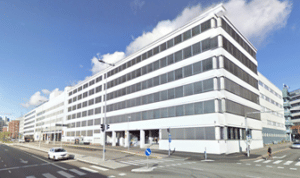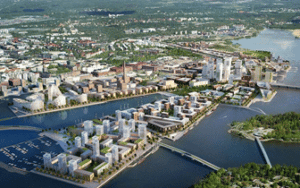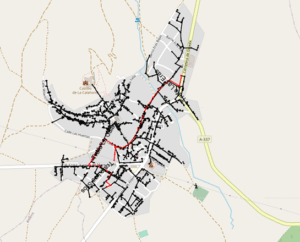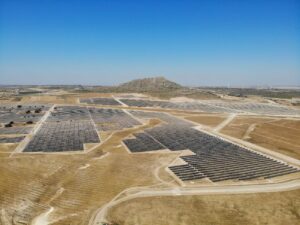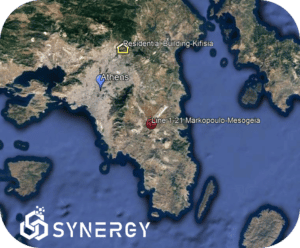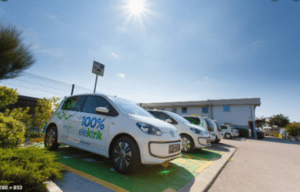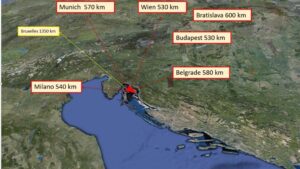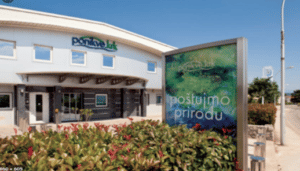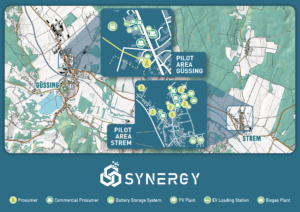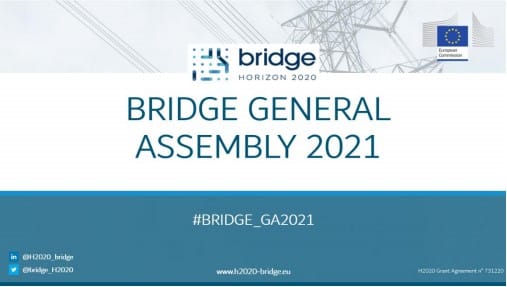By Tasos Tsitsanis [Suite5], Ioana-Emilia Badea [GECO Global], Luis Viguer Torres [ETRA I+D]
It has indeed been a year of new learnings and new opportunities. The COVID crisis has brought about new ways of working and at the same time proving the case for the opportunities that lie within digitalization.
In this light, the SYNERGY project seeks to take advantage of the increasing digitalization of also the electricity sector. Digitalization has brought opportunities to optimize operations and explore new business areas. In the energy industry, the amount of data is vast, and digitalization is thus linked closely to big data collection and analysis within advanced algorithms and AI technology.
Within the SYNERGY project it is fully recognized that industry stakeholders are already collecting – and to a certain extent already analysing their own data. However, the real value of big data produced across the electricity data value chain is hidden in the sharing of such information between the different stakeholders under the prism of an emerging economy around electricity data. Thus, lies the opportunities both in developing new ways of working and linking the existing technologies and data repositories – and amidst all this to understand what drives stakeholders to work together.

‘’The first year of the SYNERGY project has brought about the basic understanding of what brings the stakeholders of the energy industry to work together in relation to sharing data. This work is a prerequisite to building the right solutions – since participation from the whole energy value chain is a prerequisite for success when developing data solutions” says Thomas Mikkelsen, CEO & Founder at GECO Global.
Given the continuously growing role of distributed assets in the totality of business functions in the electricity sector (from Network Management to Energy Trading and from Control of Individual DERs to Flexibility Sharing), it becomes apparent that non-discriminatory, transparent and secure data exchanges between the electricity sector stakeholders are key to advancing knowledge generated at different network end-points; while enabling the revelation of valuable operational insights considering, otherwise, non-accessible (or non-utilized) critical information generated beyond the edge of traditional power networks.

‘’Looking ahead, our main goal and focus for this second year is the first release of the SYNERGY Big Data Platform and AI Analytics Marketplace. The integrated SYNERGY platform will be available by mid-2021 and the whole team is highly committed to effectively and timely achieving this key milestone of the project.” says Tasos Tsitsanis, Business Development Director at Suite5.
In this context, SYNERGY aims to unleash the data-driven innovation and collaboration potential across currently diversified and fragmented electricity actors, acting as a multiplier of the “combined” data value that can be accrued, shared, and traded. SYNERGY re-conceives real-time data sharing against traditionally bilateral contracting applied in the electricity sector, to enable holistic optimization of the operation of electricity networks and the energy performance of their constituent components (RES plants, buildings, districts) within a data (intelligence) sharing ecosystem. An ecosystem that is fueled by attractive business opportunities for the involved stakeholders, under the principles of a data economy creation around electricity data.
Digital solutions in times of Covid-19/Learnings from a Covid-19-year perspective
The pandemic crisis has clearly demonstrated the need for the transition to more sophisticated (data and intelligence-driven) solutions that can effectively adjust electricity stakeholders’ business routines to the new status quo and ensure an increased adaptability and business sustainability under highly uncertain and extraordinary circumstances.
The alteration of load profiles (shift from tertiary to residential consumption), the increase of RES in the energy mix and the significant reduction in energy demand, have brought forward the necessity for advanced analytics solutions that can deal with a small portion of historical data and a high degree of uncertainty to address the need of Network Operators for accurate forecasts for the short- and mid-term. Lower sales on the side of electricity retailers point out to the need for transforming their business model towards (digital) energy service provider. Consumers spending more time at homes are progressively realizing the value of non-energy services for convenience, well-being, and comfort, complementarily to traditional services provided by utilities and ESCOs.
These are just a few examples of the impact that COVID-19 has brought over the electricity data value chain and highlight the relevance and value that SYNERGY can offer to the electricity data value chain stakeholders. In this context and under a continuously evolving business environment, SYNERGY effectively addresses the most prominent and fundamental business challenges for the electricity sector value chain for adaptability through digitalization and for effectiveness & sustainability through the introduction of advanced collective intelligence concepts and new (data-driven) business opportunities.
Successful first year with ambitious second-year predictions
The key highlight of the project for 2020, is the release of the reference architecture for the SYNERGY Big data platform and AI analytics marketplace, aiming at enhancing the electricity data value chain stakeholders’ data reach, improving their internal intelligence on electricity-related optimization functions, while facilitating their involvement in novel sharing/trading models of data and intelligence, in order to shift individual decision-making at a collective intelligence level.

‘’The SYNERGY consortium has been performing with high-quality standards for the first year of the project, which makes us confident to overcome all the challenges ahead during 2021. To mention the most relevant from a managerial perspective, it has to be considered the deployment efforts that the end-users will face in the five different pilot sites, considering the COVID-19 restrictions that we are still facing in most cases.’’ says Luis Viguer Torres, the Project Coordinator at ETRA I+D.
Within the 1st year of implementation, SYNERGY has been successful in the identification of end-users’ requirements and the definition of the associated use cases; the foundations upon which the development of the technological innovations will step on during 2021. Business-wise, SYNERGY elaborated on a bundle of business model innovations, thus paving way for the smooth business integration and successful market uptake across the electricity data value chain.
Suite5 is the Technical Coordinator of the project. Read more about them HERE.
ETRA I+D is the Project Coordinator in SYNERGY. Read more about ETRA I+D HERE.
GECO Global is the Communication and Dissemination leader in WP9. Read more about GECO Global HERE.

